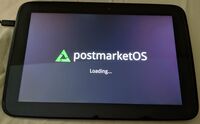Google Nexus 10 (samsung-manta): Difference between revisions
Appearance
m Specify type |
remove downstream information and replace with mainline |
||
| Line 22: | Line 22: | ||
| status_screen = Y | | status_screen = Y | ||
| status_wifi = Y | | status_wifi = Y | ||
| status_fde = | | status_fde = | ||
| status_mainline = | | status_mainline = Y | ||
| status_battery = P | | status_battery = P | ||
| status_3d = | | status_3d = N | ||
| status_audio = Y | | status_audio = Y | ||
| status_bluetooth = | | status_bluetooth = Y | ||
| status_camera = | | status_camera = N | ||
| status_gps = | | status_gps = N | ||
| status_mobiledata = - | | status_mobiledata = - | ||
| status_sms = - | | status_sms = - | ||
| status_calls = - | | status_calls = - | ||
| status_otg = Y | | status_otg = Y | ||
| status_nfc = N | |||
| status_accel = N | |||
| status_magnet = N | |||
| status_light = N | |||
| status_proximity = N | |||
| status_hall = | |||
| status_barometer = - | |||
| status_powersensor = - | |||
| status_usba = - | |||
| status_hdmidp = | |||
| status_keyboard = - | |||
| status_touchpad = - | |||
| status_irtx = - | |||
| status_irrx = - | |||
| status_trustzone = - | |||
| status_fossbootloader = - | |||
| status_stylus = - | |||
| status_haptics = | |||
| status_ethernet = - | |||
| status_cameraflash = - | |||
| status_dvb = - | |||
| booting = yes | | booting = yes | ||
}} | }} | ||
== Users owning this device == | == Users owning this device == | ||
| Line 58: | Line 72: | ||
In either case, the <code>/system</code> partition isn't big enough for all but the smallest interfaces. So if you install anything bigger, use <code>--partition</code> or <code>--recovery-install-partition</code>, depending on which way you install it, to choose a bigger partition. <code>/data</code> should have more than enough space. | In either case, the <code>/system</code> partition isn't big enough for all but the smallest interfaces. So if you install anything bigger, use <code>--partition</code> or <code>--recovery-install-partition</code>, depending on which way you install it, to choose a bigger partition. <code>/data</code> should have more than enough space. | ||
== Links == | == Links == | ||
* {{Device package|samsung-manta}} | * {{Device package|samsung-manta}} | ||
* {{Kernel package|samsung-manta}} | * {{Kernel package|samsung-manta}} | ||
Revision as of 09:50, 21 October 2023
 Google Nexus 10 | |
| Manufacturer | Google (Samsung) |
|---|---|
| Name | Nexus 10 |
| Codename | samsung-manta |
| Released | 2012 |
| Type | tablet |
| Hardware | |
| Chipset | Samsung Exynos 5250 |
| CPU | 1.7 GHz Dual-core Cortex-A15 |
| GPU | Mali T-604 |
| Display | 2560x1600 IPS |
| Storage | 16/32 GB |
| Memory | 2 GB |
| Architecture | armv7 |
| Software | |
| Original software | Android 4.2.2 on Linux 3.0 |
| postmarketOS | |
| Category | testing |
| Pre-built images | no |
| Mainline | yes |
| postmarketOS kernel | Lineage 3.4.113 |
| Unixbench Whet/Dhry score | 956.9 |
| Flashing |
Works |
|---|---|
| USB Networking |
Works |
| Internal storage |
No data |
| SD card |
No data |
| Battery |
Partial |
| Screen |
Works |
| Touchscreen |
Works |
| Multimedia | |
| 3D Acceleration |
Broken |
| Audio |
Works |
| Camera |
Broken |
| Connectivity | |
| WiFi |
Works |
| Bluetooth |
Works |
| GPS |
Broken |
| NFC |
Broken |
| Miscellaneous | |
| FDE |
No data |
| USB OTG |
Works |
| HDMI/DP |
No data |
| Sensors | |
| Accelerometer |
Broken |
| Magnetometer |
Broken |
| Ambient Light |
Broken |
| Proximity |
Broken |
| Hall Effect |
No data |
| Haptics |
No data |
Users owning this device
- Alexmrqt
- Blacksilver (Notes: + Replaced battery)
- Ecloud
- Grom (Notes: 2 of them)
- Jenneron
- Joshaspinall (Notes: Boots, no DE)
- Kevinwidjaja21 (Notes: Running PMOS sxmo-de-sway. Power button/Volume broken.)
- Lantizia (Notes: 4 of them)
- MartijnBraam
- Russanandres (Notes: CyanogenMod 10)
How to enter flash mode
- Connect a USB cable
- Power the device off
- Hold power + volume down
- You should get a bootloader screen saying "Downloading... Do not turn off target !!"
Installation
See Installation guide. If this doesn't work, try Android Recovery Zip Installation.
In either case, the /system partition isn't big enough for all but the smallest interfaces. So if you install anything bigger, use --partition or --recovery-install-partition, depending on which way you install it, to choose a bigger partition. /data should have more than enough space.